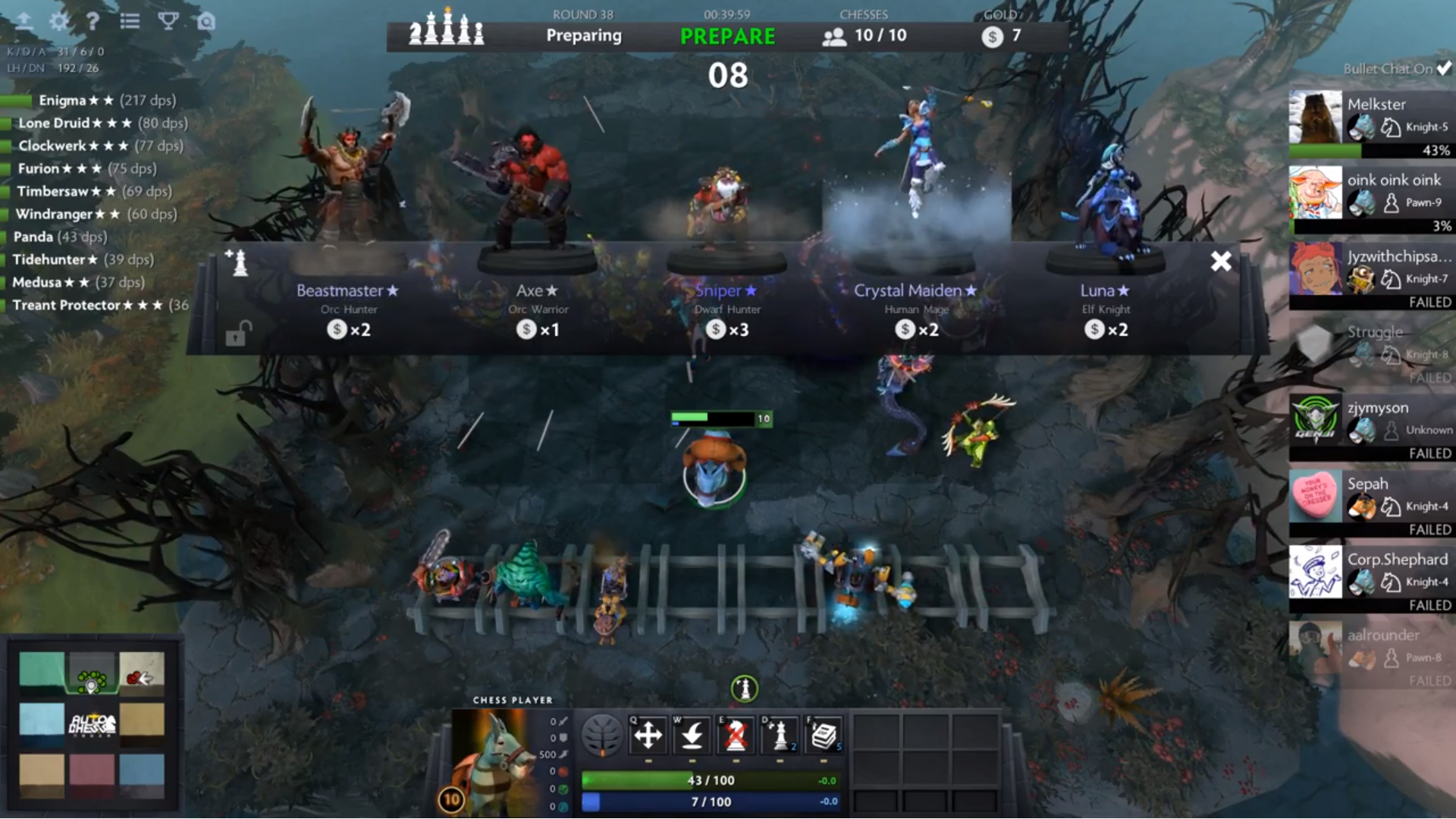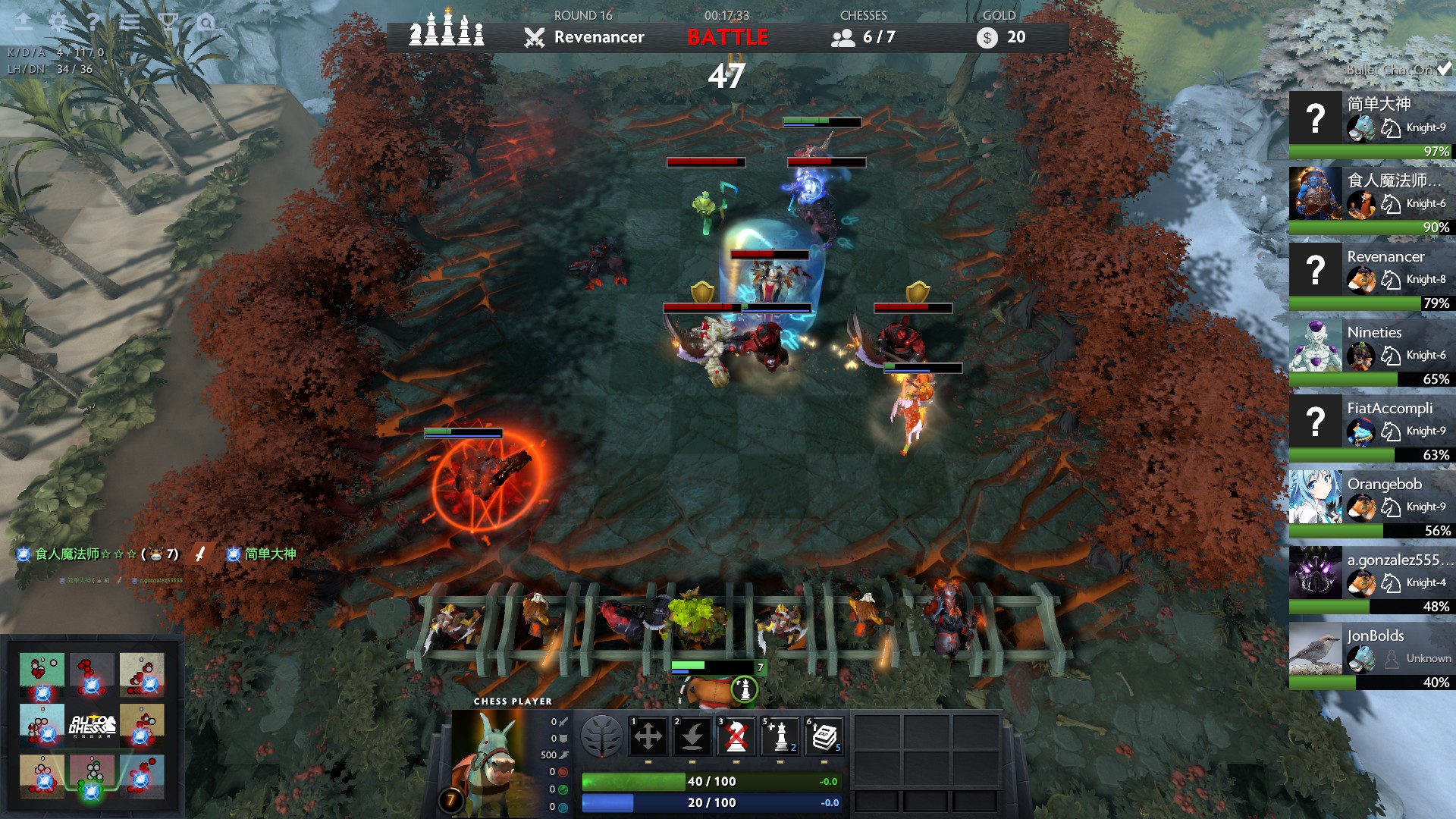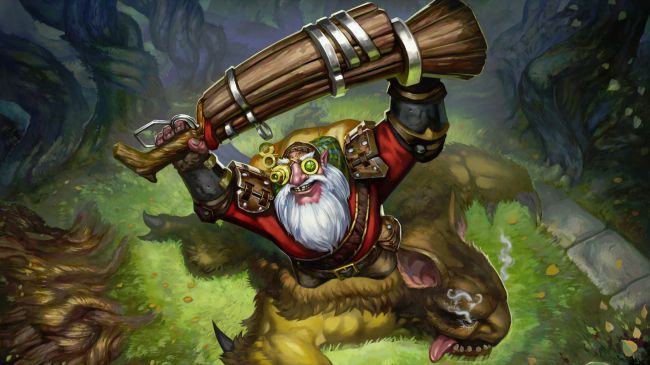Dota Auto Chess guide: how to play, and how to win
Dota Auto Chess is complicated fun—here's a guide to getting started, combos, and early through late-game tactics.

Here’s a story you’ve heard before: A mod for a popular strategy game takes the existing ideas of the game and turns them sideways, forming a new kind of game in a new, weird genre without adhering to the usual game design conventions. That’s the story of Dota 2, and that’s also the story of Dota Auto Chess, a recent Dota 2 Custom Game that’s attracting a lot of attention. Auto Chess is worth trying out if you’re interested in strategy games or digital card games, and not just because it’s free. It features mechanics from set collection card games, real time strategies, tower defense, and even from mobile gambling.
Here’s how to get started while you read this guide: Download Dota 2, then download Auto Chess.
How do I play Dota Auto Chess?
In Dota Auto Chess, you control the composition and placement of a team of heroes on a chess-like board. Each round of Auto Chess sees you buying new heroes and placing them on the board to try to win a fight against either neutral Creeps or one of your seven opponents' teams of heroes. Buy and place is all you do, though: The real-time fights between the heroes are outside your control. That’s the Auto part of Auto Chess. If you win, you move on to the next round and get some gold. If you lose, your courier—your controlling avatar—loses hit points based on how many enemy units are left alive and how strong they are. Then you have 30 seconds to buy new heroes and manage your army before the next round starts in an ever-revolving round robin tournament. The last player standing wins.
When you place heroes on the board, placing more than one of the same kind will upgrade that hero to the next level. The number of total heroes you can have on the board is equal to the level of your courier, and leveling up your courier takes precious gold, so upgrading your heroes lets you get the most out of limited space. Heroes also get bonuses based on how many of that type are on the board.
Upgrading or getting those type bonuses means you have to collect sets of heroes, and each round you draft heroes from a selection drawn randomly from a common pool with a fixed number of pieces shared among all the players. In effect, this means not every player can share the same strategies, and you have to watch what others are buying so that you know if you’re competing for the same pieces. You might also get items from fighting creeps that help you form a strategy.

I’ll use the terms early-, mid-, and late-game a lot in this guide. The early game is generally considered to be the first four levels, the mid to be levels five to seven, and the late to be levels eight to ten.
If this all sounds random and surprising and hard to keep up with, that’s because it is—at least at first. So you have to focus on aspects of the game that you can control.
Keep up to date with the most important stories and the best deals, as picked by the PC Gamer team.
The Auto Chess economy
Economics are king in Auto Chess, but feature some remarkably unintuitive aspects. The game isn't made any easier by balance updates that come nearly every day of the week, especially when they change which heroes cost what and therefore how many are in the pool.
Each round you’ll get a base gold income. You’ll also get a single extra gold for winning a round. You also get gold for a streak—either winning or losing—that can stack up to three per win or loss in a row. Each round you also get 10 percent interest on your gold stores, rounded down—saving up 50 or more gold at the mid game for late game interest is important. (It’s something you can control!)
Economic strategy, therefore, is to either win or lose for a few games in a row, but never alternate between the two. The poorest players in a game are the ones who alternate between winning and losing each round. Losing on purpose can be good if you’re struggling—it’ll cost you hit points, but it’ll also stack up your losing streak bonus and let you get back in the game before you’re out entirely. I like to just commit to the loss until I get to less than 40 health while focusing on only the most valuable heroes, and then combine those heroes to a mid-game surge and spend big to try to win.

Placing three heroes of the same kind and level on the board will upgrade them into a single, stronger hero of a higher level. Heroes cost an amount based on their power—between one and five—but take the same number of duplicates to upgrade no matter their base cost. So it’s pretty easy to make a one cost hero into a level three. You just need to spend the nine gold to buy nine copies, and there are 45 copies of a one cost hero in the pool, so you’ve got a good chance of finding them in the draft. Meanwhile, it’s expensive to make a four or five cost hero (36 or 45 gold, respectively) into its level three form—not to mention that you’d need to get randomly dealt and then have the gold to buy 90% of the available supply of a five cost hero to level it up.
Your early hero buys might not fit into a larger strategy very well, but don’t be afraid to buy low level pieces you might not use long term because level one heroes can always be sold back for their full value. You’ve got eight reserve hero slots for precisely this reason. You can spend money to refresh your available pool and hunt down the pieces for your combo, but that costs valuable gold and will guarantee your defeat if you do it too much in the early to mid game. Remember that you can lock the pool if you want a piece but can’t afford it until next round—just don’t forget to unlock it.
How do Auto Chess heroes work?
Heroes are like any unit in an RTS or RPG: They have health, mana, damage, armor, and the like. They have an attack speed with its own animations and quirks based on model—these are things very familiar to Dota 2 players and accessible on the game’s wiki. Others are weird and poorly understood or documented at this time, like movement and range. Range is measured in the imprecise way of Dota 2. Suffice to say that each chess space is about 200 range, and most heroes with range can hit two spaces away at 400 range. Dwarf heroes like Sniper have 300 extra range, for a total of 700, so they can hit most of the board from any space. Movement is… less clearly delineated. Some heroes, like assassins, can leap the whole board in a move. Others, like Tiny, plod along one space at a time.
Each hero also has a single ability, which it uses by spending its mana and which it will almost always automatically use as soon as it can. Heroes get mana by dealing or taking damage with their attacks, so survivable or long-range and high damage heroes generally get to use their powers more often. Higher level heroes have more hit points and do more damage, so they’re also more likely to get to use their abilities.

Where you place your heroes on the board has a lot to do with this. You have half the 8x8 board to use, that’s 16 spaces for as many as 10 heroes. Putting squishy heroes in the back and tanks in the front is good, but knowing which tank needs to be supported to survive and use its ability versus which tank can just take the hits and go down fighting is key. Putting your tough, upgraded Timbersaw up at the front is good because his ability cooldown is very low, so he’ll take lots of damage and get to use that ability a lot. Tidehunter, on the other hand, needs to take damage to get off his powerful Ravage stun as quickly as possible, but it has a huge cooldown, so he won’t need a lot of mana long term. Keeper of the Light needs to be in corners or at the side of the field because his power is a large line. Compared to the rest of Auto Chess, hero placement is actually fairly intuitive when you’re just getting started—more complicated placement combos and flanking strategies can wait.
Composing a team isn’t just about upgrading whatever you can buy for cheap, it’s about synergising the abilities of what you do buy and knowing when you diversify out of what you’re already specialized in. Goblin Mechs are strong in the early game, for example, but their effectiveness tapers off against other late game combos. Synergy bonuses from species and class are gained by having more multiple unique units of the same class and race on the battlefield at a time. Three or more Mages, for example, decrease the magic resistance of every enemy unit.
Choosing synergies is tricky, dependent on others’ team compositions, and can be a trap if you’re not wholly committed or if you overspecialize. Three or more warriors are always good, because warriors increase every warrior’s armor by a stacking amount when you’ve got three and six of them, and there are a lot of warriors from every species. Elves are a limited species specialization, on the other hand, and give each other evasion—but only the elves will benefit, so you have to tailor strategy for that. Two undead, meanwhile, is almost always worth it because they debuff every enemy’s armor. Two nagas is invaluable, boosting every hero on your team with extra magic resistance.
Popular strategies for starting players are often Warriors early game into Mages or Assassins late game, going all-in on Knights and Undead using Luna and Abaddon, or the often-dominant Goblin Mech combo that double dips on species and class synergies using the four different Goblin Mech characters. Here’s your real warning, though: Every game of Auto Chess has its own metagame based on picks, and the game itself has a meta based on strategies. Going for the dominant or popular builds can lose you the game when everyone else is going for them too.

All this and items, too
Rounds 1, 2, 3, 5, and every fifth round after that are the creep waves, where you fight a group of neutral enemies instead of an opponent. Killing those enemies can give you valuable items to equip heroes with, and those items can make or break a strategy or win a game. No take-backsies on item equipping, though—once you give a hero an item it’s theirs forever.
Item management is an advanced tactic, so to start just put them where they’ll do good—mana items on a mage hero, armor items on a warrior. There are also, like in Dota 2, item recipes based on equipping a specific set of items to combine them into a more powerful item. These are obscure and weird to beginners, and some differ significantly from what a Dota 2 veteran might expect. I’d recommend just keeping the recipe list on the Auto Chess wiki open on a second monitor or printing it out for ease of reference.
At this point, you should get in there and play. Don’t be afraid to try stuff out and win or lose. First start to learn the class and species synergies so you can build teams, then the hero powers, then worry about bigger concerns like watching your opponents or building up a stable of go-to strategies.

Advanced Dota Auto Chess tactics
Once you’ve played your first few games you’ll have space to really start to learn combos. You’ll figure out which heroes you like, which heroes nobody else likes, and how to combine those into a winning team. Here are some key tips moving forward from the basics:
1. Make an early commitment to a simple strategy and go all-in on it. You want to win early games, remember, to get that win streak bonus built up and kill those creeps for items. Commit early, then base your actual, long term strategies around your mid-game hero draws and items. Dota Haven has a good guide on the game phases if you’re struggling with how to build teams for different parts of the game. Likewise, a few lucky items drops can make or break the game for you. If you’ve got lots of lifesteal, build a powerful auto-attack team that really values those items. If you luck into a powerful item recipe, be willing to spend the extra gold required to make the equipped hero into as strong a piece as possible, even if it hurts you economically.
2. Watching your enemies’ moves is hard to do in the 30 seconds you have for strategy, but it’s vital. Knowing what others are buying lets you know what you can buy in order to take advantage of surplus pieces in the pool. A few convenient leveled up heroes because nobody’s buying Knights, for example, can easily win you the game. If you’ve decided to take a few losses to hoard money, spend that time watching enemies’ compositions so you can work against them: You’re going to lose anyways.
3. Placement can really matter when you bait valuable enemy heroes away from optimal positioning of their own. If you know your enemy is deploying a central Tidehunter with its huge area of effect stun, try to put a less valuable unit of your own forward and to one side in order to pull it away from the main body of your force.
4. Balance changes can come fast and furious, often two or three times a week. Check out unit tier lists for a shorthand, but watching the Auto Chess subreddit is one of the best ways to understand what’s going on. For now, know that Crystal Maiden is awful and should almost never be picked. Kunkka is godlike good even if he’s useless for your overall strategy, and should nearly always be picked. Tidehunter is similar, if trickier to use, but also plays into the valuable Naga synergy bonus.
Jon Bolding is a games writer and critic with an extensive background in strategy games. When he's not on his PC, he can be found playing every tabletop game under the sun.

